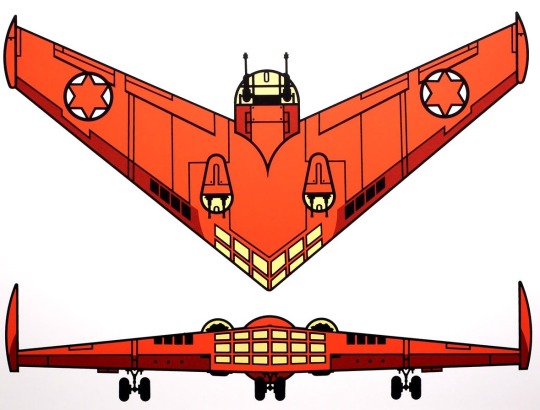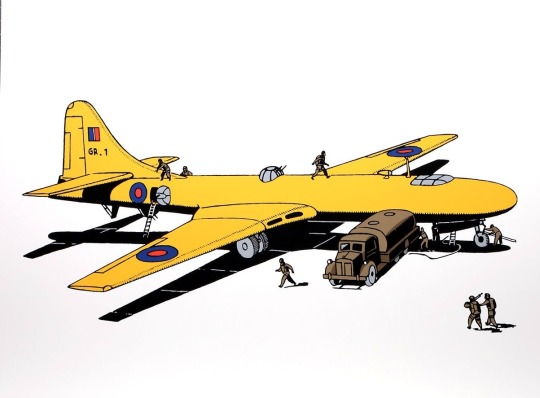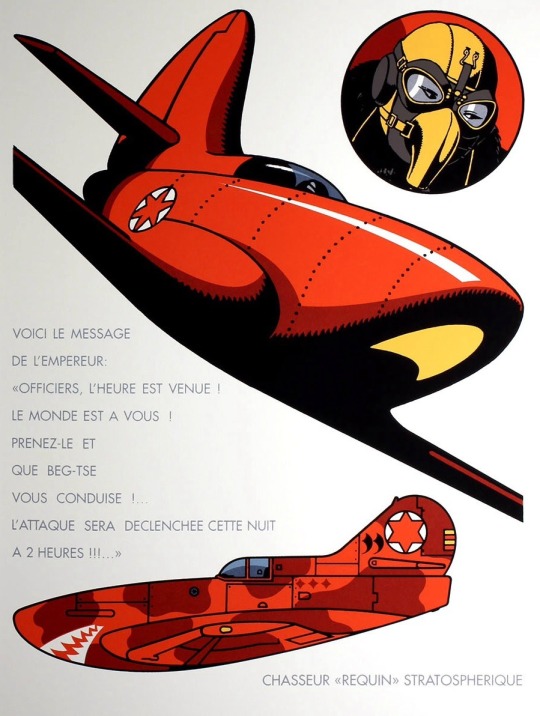classic european comics and bande dessinee submit: http://heftchen.tumblr.com/submit any questions?: http://heftchen.tumblr.com/ask
Don't wanna be here? Send us removal request.
Photo










Blake et Mortimer - Edgard P. Jacobs (Plates from “Le Secret de l’Espadon” 1946)
#blake et mortimer#edgar p. jacobs#comicbooks#BD#bande dessinée#comics#1946#le secret de l'espadon#ligne claire#franco-belgian comics
219 notes
·
View notes
Photo

Cover by Hugo Pratt to European Cartoonist magazine #1, published by Nino Bernazzali, 1973.
189 notes
·
View notes
Photo
The year is a bit confusing: The story is taking place in 1936, but Bernet took over drawing Torpedo in the eighties right from the hands of famous comics artist Alex Toth, who started drawing the series in 1981. Toth left Torpedo, because he wasn't comfortable with the dark and cynical storytelling of Enrique Sánchez Abulí. Jordi Bernet with his more rough and gritty style was the perfect guy for drawing the violent black-humorous tales of the Italo-American hitman.

Torpedo by Jordi Bernet (1930s)
#torpedo#torpedo 1936#jordi bernet#enrique sanchez abuli#comics#alex toth#bande dessinée#bd#gangster#hitman
852 notes
·
View notes
Photo




by Ted Benoît
151 notes
·
View notes
Photo

Ralph Reese - Metal Hurlant, 1979.
#comics#magazine#cover#bande dessinée#BD#metal hurlant#science fiction#blade runner#ralph reese#1979
291 notes
·
View notes
Photo
spanish page of Adieu Brindavoine from 1974 by Jaques Tardi.
Originally written and published before Adele Blanc-Sec's adventures it is marking a break in the storyline and got integrated later on between pre-war and after-war Adele stories (Adele herself is "dead" during the First World War). The main character is Adele's friend Lucien Brindavoine who returns crippled from the Great War in the later stories.
Together with La fleur au fusil it is also one of Tardi's earliest attempts to describe the horrors and senseless slaughters of WW I.

Tardi
#page#comics#bande dessinée#BD#Jaques Tardi#Tardi#adieu Brindavoine#Lucien Brindavoine#WW I#great war#Adele Blanc-Sec
8 notes
·
View notes
Photo
panel from CORTO MALTESE in Nel nome di Allah misericordioso de compassionnevole
by Hugo Pratt, 1972
It is one of four Corto Maltese adventures that are set in northern Africa at the end of WW I. Pratt is feeding the story with his own experiences as a son of colonists and member of a fascist youth corps. It's kind of his way to give the colonialized people back their dignity and a chapeau to the guerilla fighters as well as showing the senselessness of Italy's colonial adventure and the stupidity of fascist ideology.

#Corto Maltese#comics#comicbooks#bande dessinée#BD#adventure#hugo pratt#northern africa#yemen#somalia#ethiopia#lee enfield#panel#colonialism#fascism
89 notes
·
View notes
Photo

cover of MOSAIK no. 202:
Die Affenplage von San Felipe.
by Hannes Hegen and his "artist-collective"
The MOSAIK was the only "comicbook" in the GDR and published by the central-committee of the SED-youth organization FDJ. The comics had no speechbubbles and when "chief-artist" Hannes Hegen, who invented the maincharacters DIGEDAGS (Dig, Dag and Digedag), claimed his copyrights and wanted more money, they kicked him out of the game and relaunching MOSAIK with the three similar ABRAFAXE, who are starring in the MOSAIK until today. So MOSAIK (as a newsstand title) is the longest running comic-magazine in Germany.
#mosaik#hannes hegen#ddr comics#GDR#digedags#cover#BD#bande dessinée#comics#die affenplage von san felipe#no. 202#1973
6 notes
·
View notes
Photo

Theodore prend l’air
Le Gall
18 notes
·
View notes
Photo

Kid Panama a la rescousse !
Les aventures siderales de Rocco Vargas
Daniel Torres
15 notes
·
View notes
Photo

cover of WESTERN MAGAZIN no.1, 1969, West-Germany
one of the many products of the Rolf Kauka comic empire, best known for his Fix und Foxi (a rip-off of Disney's Duckburg) and some infamous right-wing versions of Asterix and Spirou.
The WESTERN MAGAZINE got dropped after the first issue.The main intention was to produce more single titles for the newsstands, while Kauka was thinking about selling his publishing house, so it would be more attractive for possible investors.
27 notes
·
View notes
Photo

Couverture pour “De Minuit a sept heures” de Maurice Leblanc
Floc’h
20 notes
·
View notes
Photo
watercolored sketches for the introduction of "MU"

29 notes
·
View notes
Photo
Max is running for shelter at Parc Güell when the fascists are bombing Barcelona.
No Pasaran!

Max Fridman - couverture de “No Pasaran” - 2004
Par Giardino
43 notes
·
View notes
Photo

Une planche de Rocco Vargas
Par Daniel Torres
110 notes
·
View notes
Photo

Corto se ballade sur le port
Par Hugo Pratt
47 notes
·
View notes
